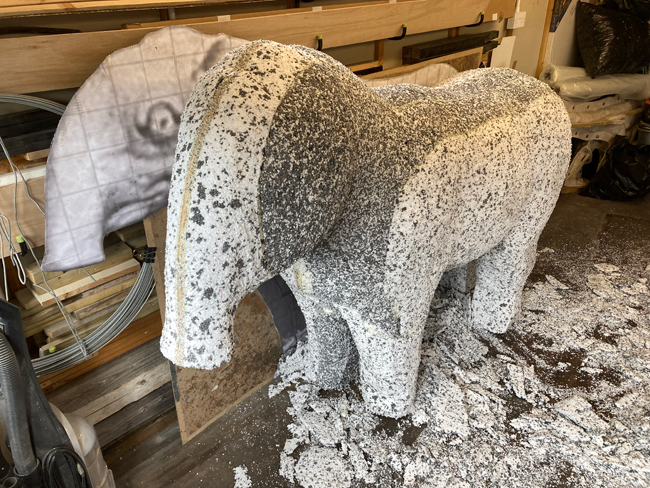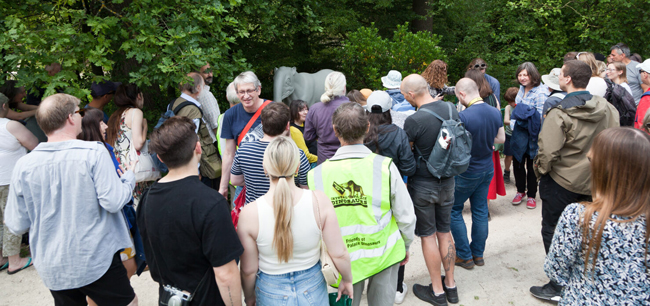A Victorian-era statue of a Palaeotherium magnum, an ancient mammal distantly related to horses has been rebuilt and installed at Crystal Palace. The original sculpture, designed by Benjamin Waterhouse Hawkins, was lost in the 1960s. Thanks to a dedicated team of historians, palaeontologists and artists Palaeotherium has returned to the famous Crystal Palace Dinosaurs site.
The Crystal Palace Dinosaurs Site
The Crystal Palace Dinosaurs have Grade 1 listed status. The collection consists of around thirty figures and approximately forty geological displays. They were created in the 1850s and represent the world’s first attempt to depict life-size prehistoric animals.
Commenting on the significance of the site, evolutionary biologist at the Natural History Museum and Chair of the Friends of the Crystal Palace Dinosaurs, Elinor Michel stated:
“The sculptures are of huge historic and scientific importance. The display first opened twenty-eight years before the London Natural History Museum and was the first-time models of extinct creatures had been used to engage people with science and geological time. For many visitors, this was their first introduction to the idea of lost worlds of animals and environments that no longer exist.”
Victorian-era Sculptures of Prehistoric Animals
Crystal Palace might be famous for its dinosaur sculptures, but only four of the statues represent members of the Dinosauria. The other figures represent marine reptiles, pterosaurs, crocodilians, amphibians and prehistoric mammals.

Picture credit: Everything Dinosaur
The building of a life-size Palaeotherium magnum was a task taken up by Britain’s leading palaeo artist and chum of Everything Dinosaur Bob Nicholls. Friends of the Crystal Palace Dinosaurs, staff from the Natural History Museum and researchers from the University of Portsmouth supervised the project.

This is the first attempt in twenty years to replace a lost sculpture at Crystal Palace. The resurrection of Palaeotherium emphasises the importance of the work to document the changes that have taken place within the grounds.
Palaeotherium magnum
Professor Adrian Lister (London Natural History Museum) commented:
“Palaeotherium magnum is the largest among a group of five mammal species represented in the Park that lived in the Eocene some 44.5 to 33.5 million years ago when Britain was clothed in tropical forest. The size of a small, chunky pony, it was a browsing mammal some 2 metres long and 1.3 metres high.”
The restored sculpture was unveiled at a special ceremony at Crystal Palace Park today (2nd July, 2023). As part of the events to commemorate the return of Palaeotherium, visitors were offered a conducted tour of the site.
Palaeotherium Project is Part of a Wider Initiative
The Palaeotherium project is part of a wider initiative to revive and conserve the Crystal Palace Dinosaurs site. Friends of Crystal Palace Dinosaurs, Historic England, the new Crystal Palace Park Trust and Bromley Council have been working together to develop a plan to protect the site. The resurrection of Palaeotherium magnum highlights a more optimistic, entertaining and enlightening future for one of the UK’s most iconic greenspaces.
Everything Dinosaur acknowledges the assistance of a media release from the London Natural History Museum in the compilation of this article.









Leave A Comment